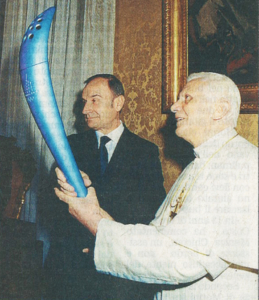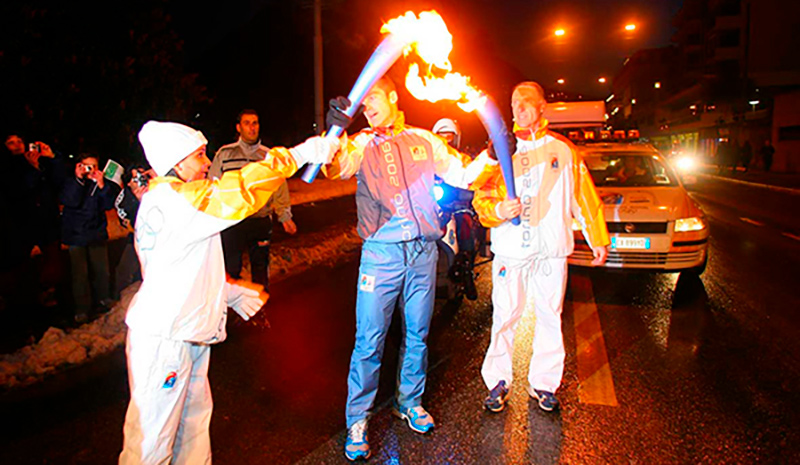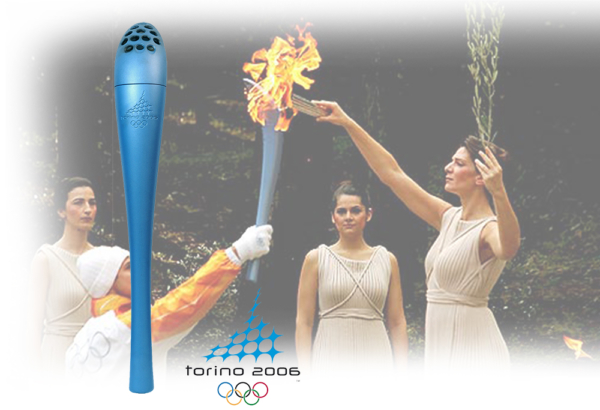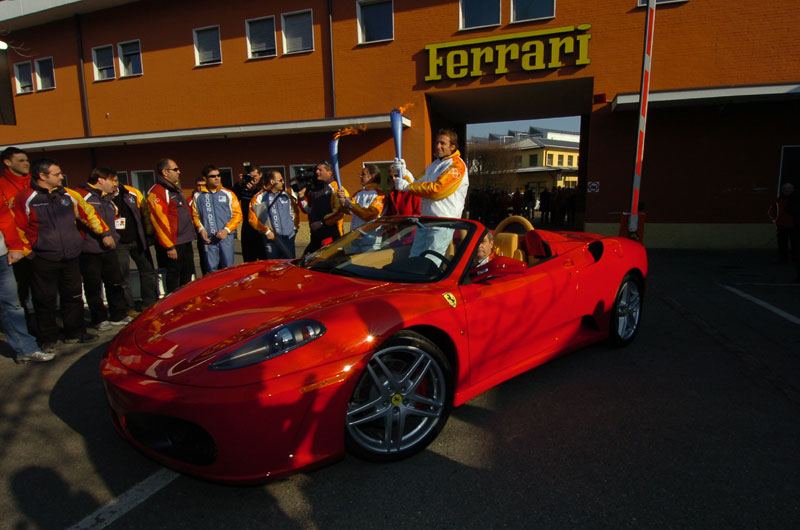Due to covid-19, even the 32nd edition of the Olympic Games has been postponed. The opening ceremony of the Olympics 2020 will finally be held in Tokyo on 23rd of July. As it has been since 1936, the Olympics will officially begin with the parade of all competing athletes into Tokyo Stadium and the lighting of the Olympic cauldron. This honour falls to the last torchbearer in the traditional relay of the Olympic torch, which is different every year in terms of structure and design. The Tokyo 2021 torch is the work of designer Tokujin Yoshioka, who combined the culture of the host country and Japan’s green approach. The body of the torch is made of aluminium recycled from the houses that hosted people affected by the 2011 Fukushima earthquake and completed with a rose gold lacquer to recall the cherry blossom, the country’s symbol.
Looking back, an all-Italian design was the protagonist of the 2006 Winter Olympics in Turin. That year, Pininfarina was in charge of designing the Olympic torch and, together with the Olympic Committee,chose to entrust Cavagna Group with the development of the technology that would allow the torch to burn.
The Olympic Torch Project in 2006
‘Passion Lives Here’ was the motto of the 2006 edition, but it was also the leitmotif of all the torch design phases. This project was a challenge that Cavagna Group accepted and carried through with determination and tenacity. The call arrived just before Christmas 2004 and by mid-January 2005, the team had already presented the first project. The lightweight body, whose design resembled the tip of a ski, was made from a brass alloy and aluminium components. Inside, between the propylene – butane gas cylinder and the burner, the Cavagna’s exclusive patent was located. A tap with a small pressure regulator, developed vertically, which led to a nozzle for the gas calibration.
Deadlines were tight and requirements imposed by the Olympic Committee unequivocal. The flame should never be extinguished during the torchbearer’s run. Moreover, after the run, the technician following the torchbearers should be able to cut the power supply pipes to prevent the torch being lit a second time. The flame also had to be a vivid orange-yellow colour and, at the same time, release the black halo characteristic of the old wooden torch.
For the first presentation by then-President Ciampi in March, Cavagna prepared two versions. The first one, as requested by the Committee, with a flame that lasted longer but was less voluminous, and a second version, suggested by the Cavagna team, which ensured a burn time of 15 minutes and a good power output as well. The upgraded version, which was much more scenic and suitable for television filming than the first one, was then decided as the final version.
From Athens to Turin: the Olympic Torch Relay

The Cavagna’s patented ‘beating heart’ of the torch managed to withstand the 30° Celsius temperature in Athens, as well as the frost in the mountains of Piemonte, passing through Rome where a torch with a special dedication (‘Olympic Fire, a light for young people‘) received the Pope Benedict XV‘s blessing. From here, the torches resumed their journey to Turin, covering 11,000 km and passing through 600 Italian municipalities. The Cavagna Group’s patented system was able to withstand jumps from a trampoline and bobsleigh descents, making 120 km/h gusts of wind and the fastest torchbearers’ runs harmless.
According to the torchbearers, the traditional ‘kiss between the torches‘ is undoubtedly the most exciting moment of the entire relay race. A technician with a special key opens the gas and activates each torch, but it is only when the two torchbearers meet each other that the torch comes to life in the streets, among the cheering viewers.

The opening ceremony
In total, the Cavagna Group manufactured 12,000 regulators for as many torches. Among them was the torch that entered Turin’s Olympic Stadium on 10 February 2006, together with a triumphant Alberto Tomba.
It was a magical night that lit up Turin that year. Solemn, spectacular and profoundly Italian. After the ritual opening formula and the athletes’ oath, the ceremony ended with a final coup de théâtre, which once again saw the torch as the protagonist. Stefania Belmondo, Italy’s most successful cross-country skier, run the final lap with the last Olympic torch. The champion then started a spectacular fireworks show, culminating in the firing of the cauldron, also designed by Pininfarina.
Tradition and modernity
Today, as in ancient Greece, fire remains the symbol of the world’s most important sporting event. Since the 1928 edition, the ancient tradition that additional fires should remain lit at Zeus and his wife Hera’s temple for the duration of the Ancient Olympic Games was revived in Amsterdam. The rediscovery of the holy fire of Olympia is due to the architect Jan Wils, who designed a brazier on top of the so-called Marathon Tower in the stadium that would host the ninth edition of the Modern Olympics.
Fire, as a symbol of the development of civilisation and union between countries, also features in the torchbearers relay. Like the ancient messengers in charge of communicating the state of non- belligerence for the duration of the Games, today the torches, and the torchbearers with them, act as a vehicle for the noble values of union and peace that sport intends to spread out.
Cavagna Group display one of the torches from the ceremony proudly in their Head Office in Brescia to remember what a wonderful occasion it was to be part of such a momentus event.












